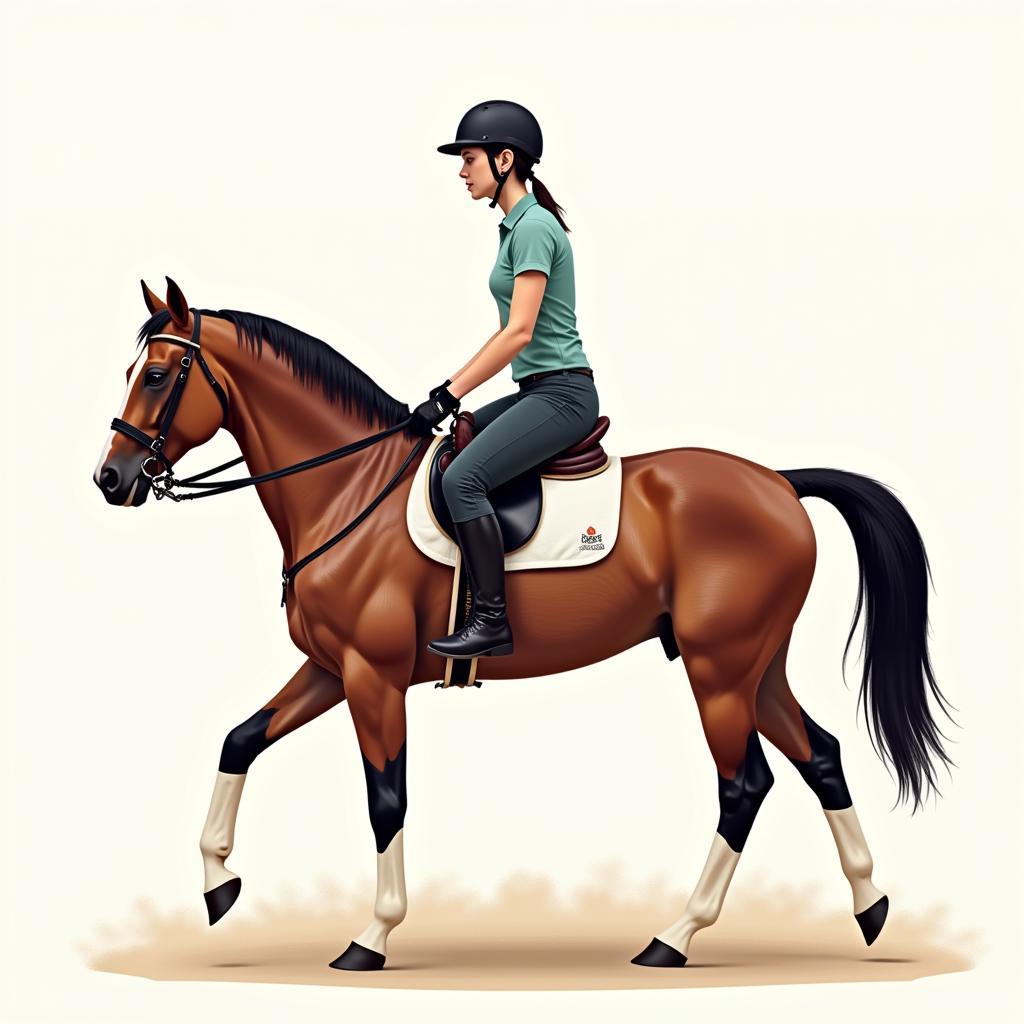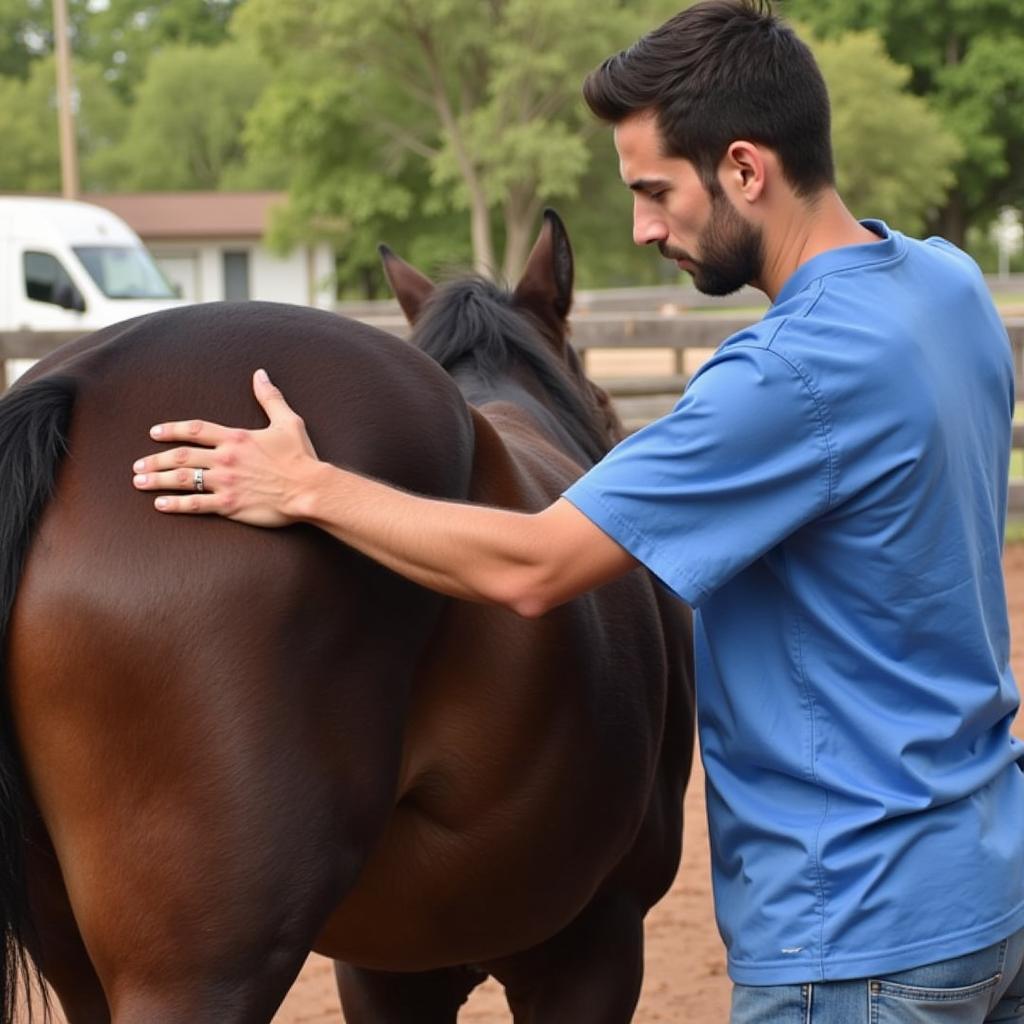Swayback Horse, also known as lordosis, is a condition characterized by an abnormal dip or sway in the horse’s back, specifically in the lumbar and thoracic regions. This noticeable dip can range from mild to severe and has significant implications for the horse’s health, comfort, and performance.
Several factors can contribute to a swayback horse. Age is a primary factor, with older horses, particularly mares who have had multiple pregnancies, being more susceptible. This is due to the weakening of ligaments and muscles that support the spine over time. Poor nutrition, especially deficiencies in key nutrients like calcium and phosphorus, can also play a role in the development of swayback. what is swayback in horses Additionally, injuries to the back or pelvis, ill-fitting saddles, and incorrect riding techniques can exacerbate or even cause the condition.
Recognizing the Signs of a Swayback Horse
Identifying a swayback horse often begins with visual observation. Look for a pronounced dip in the back, which can be easily seen when viewing the horse from the side. Other indicators include a protruding abdomen and a change in the horse’s gait, often appearing stiff or uncomfortable.  Horse Rider with Swayback In more severe cases, the horse may experience pain and have difficulty moving.
Horse Rider with Swayback In more severe cases, the horse may experience pain and have difficulty moving.
Is Swayback Painful for a Horse?
While a mild swayback might not always cause noticeable discomfort, more pronounced cases can indeed be painful for the horse. The abnormal curvature puts strain on the supporting muscles and ligaments, leading to soreness and stiffness. This can manifest as reluctance to be saddled, difficulty bending or turning, and changes in temperament.
“Early detection is key,” says Dr. Emily Carter, DVM, an equine specialist with over 20 years of experience. “Addressing swayback in its early stages can significantly improve the horse’s long-term comfort and well-being.”
Managing a Swayback Horse
Managing swayback primarily focuses on alleviating discomfort and preventing the condition from worsening. back on the horse This includes ensuring proper nutrition, with a diet rich in essential vitamins and minerals. Regular exercise, tailored to the horse’s condition, can help strengthen supporting muscles. Using a properly fitted saddle is crucial to distribute weight evenly and avoid further strain on the back.
What Can I Do to Help My Swayback Horse?
Providing a comfortable environment for your swayback horse is essential. Ensure proper bedding to cushion pressure points. Regularly consult with your veterinarian and farrier to monitor the horse’s condition and adjust management strategies as needed.
Preventing Swayback in Horses
Preventing swayback starts with ensuring proper nutrition throughout the horse’s life, especially during growth and development. horse frame This includes providing a balanced diet with adequate calcium, phosphorus, and other essential nutrients. Maintaining a healthy weight is also important, as obesity can put extra strain on the back. Avoid overworking young horses and ensure proper riding techniques to prevent injuries that could contribute to swayback. horse pelvis
“Proper nutrition and balanced exercise are the cornerstones of swayback prevention,” emphasizes Dr. David Miller, PhD, an equine nutritionist and researcher. “By providing the horse with the right building blocks and ensuring a healthy lifestyle, we can significantly reduce the risk of developing this condition.”
 Treating a Swayback Horse
Treating a Swayback Horse
Conclusion
Swayback horse is a condition that requires careful management and attention to detail. By understanding the causes, recognizing the signs, and implementing appropriate management strategies, horse owners can significantly improve the comfort and well-being of their swayback horses. Prioritizing prevention through proper nutrition, exercise, and riding practices is essential for maintaining a healthy and sound horse throughout its life. Remember to consult with your veterinarian for personalized advice and treatment plans for your swayback horse. ponease for horses
FAQ
-
Can a swayback horse be ridden? It depends on the severity of the condition. Consult with your veterinarian.
-
Is swayback hereditary? While there might be a genetic predisposition, environmental factors play a larger role.
-
Can swayback be cured? Swayback cannot be cured, but it can be managed to alleviate discomfort.
-
What is the best diet for a swayback horse? A balanced diet rich in vitamins and minerals, especially calcium and phosphorus, is essential.
-
How can I prevent swayback in my young horse? Ensure proper nutrition, avoid overworking, and use correct riding techniques.
-
What are the long-term implications of swayback? Untreated swayback can lead to chronic pain and reduced mobility.
-
When should I contact a veterinarian about swayback? If you suspect your horse has swayback, consult with your veterinarian immediately.
Need further assistance? Contact us: Phone: 0772127271, Email: [email protected] or visit us at QGM2+WX2, Vị Trung, Vị Thuỷ, Hậu Giang, Việt Nam. Our customer service team is available 24/7.